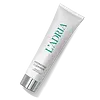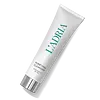What's inside
What's inside
 Key Ingredients
Key Ingredients

No key ingredients
 Benefits
Benefits

 Concerns
Concerns

 Ingredients Side-by-side
Ingredients Side-by-side

Water
Skin ConditioningGlycerin
HumectantSodium Cocoamphoacetate
CleansingPentylene Glycol
Skin ConditioningLauryl Glucoside
CleansingBetaine
HumectantCocamidopropyl Betaine
CleansingXanthan Gum
EmulsifyingAlgin
MaskingPlankton Extract
Skin ConditioningAllantoin
Skin ConditioningSodium Lauryl Glucose Carboxylate
CleansingSodium Cocoyl Glutamate
CleansingGlycol Distearate
EmollientCitric Acid
BufferingCopper Gluconate
Skin ConditioningSodium Chloride
MaskingSodium Benzoate
MaskingLaureth-4
EmulsifyingLeuconostoc/Radish Root Ferment Filtrate
AntimicrobialWater, Glycerin, Sodium Cocoamphoacetate, Pentylene Glycol, Lauryl Glucoside, Betaine, Cocamidopropyl Betaine, Xanthan Gum, Algin, Plankton Extract, Allantoin, Sodium Lauryl Glucose Carboxylate, Sodium Cocoyl Glutamate, Glycol Distearate, Citric Acid, Copper Gluconate, Sodium Chloride, Sodium Benzoate, Laureth-4, Leuconostoc/Radish Root Ferment Filtrate
Water
Skin ConditioningPropanediol
SolventDecyl Glucoside
CleansingCoco-Glucoside
CleansingPentylene Glycol
Skin ConditioningSalicylic Acid
MaskingGluconolactone
Skin ConditioningXanthan Gum
EmulsifyingArginine
MaskingBetaine
HumectantLactobionic Acid
BufferingSaccharomyces/Sea Silt Ferment
Skin ConditioningHydroxyethylcellulose
Emulsion StabilisingGlycerin
HumectantSodium Phytate
Tasmannia Lanceolata Fruit/Leaf Extract
AntioxidantLeuconostoc/Radish Root Ferment Filtrate
AntimicrobialWater, Propanediol, Decyl Glucoside, Coco-Glucoside, Pentylene Glycol, Salicylic Acid, Gluconolactone, Xanthan Gum, Arginine, Betaine, Lactobionic Acid, Saccharomyces/Sea Silt Ferment, Hydroxyethylcellulose, Glycerin, Sodium Phytate, Tasmannia Lanceolata Fruit/Leaf Extract, Leuconostoc/Radish Root Ferment Filtrate
Ingredients Explained
These ingredients are found in both products.
Ingredients higher up in an ingredient list are typically present in a larger amount.
Betaine is a common humectant (a substance that promotes retention of moisture). It's known to be gentle on the skin and can help balance hydration.
This ingredient is best for improving hydration and soothing irritated skin. Studies also show it helps even out skin tone.
Fun fact: Betaine is naturally created in the skin and body. The kind found within cosmetic products can be either plant-derived or synthetic.
Another name for betaine is trimethylglycine.
Learn more about BetaineGlycerin is already naturally found in your skin. It helps moisturize and protect your skin.
A study from 2016 found glycerin to be more effective as a humectant than AHAs and hyaluronic acid.
As a humectant, it helps the skin stay hydrated by pulling moisture to your skin. The low molecular weight of glycerin allows it to pull moisture into the deeper layers of your skin.
Hydrated skin improves your skin barrier; Your skin barrier helps protect against irritants and bacteria.
Glycerin has also been found to have antimicrobial and antiviral properties. Due to these properties, glycerin is often used in wound and burn treatments.
In cosmetics, glycerin is usually derived from plants such as soybean or palm. However, it can also be sourced from animals, such as tallow or animal fat.
This ingredient is organic, colorless, odorless, and non-toxic.
Glycerin is the name for this ingredient in American English. British English uses Glycerol/Glycerine.
Learn more about GlycerinLeuconostoc/Radish Root Ferment Filtrate is a natural preservative. It comes from fermenting radish roots with a bacteria called leuconostoc.
Leuconostoc comes from lactic acid.
This ingredient has antimicrobial properties and helps prevent the growth of bacteria in a product.
Leuconostoc is used to make the traditional Korean side-dish, kimchi. It is also used to make sourdough bread (both incredibly yummy foods).
Learn more about Leuconostoc/Radish Root Ferment FiltratePentylene glycol is typically used within a product to thicken it. It also adds a smooth, soft, and moisturizing feel to the product. It is naturally found in plants such as sugar beets.
The hydrophilic trait of Pentylene Glycol makes it a humectant. As a humectant, Pentylene Glycol helps draw moisture from the air to your skin. This can help keep your skin hydrated.
This property also makes Pentylene Glycol a great texture enhancer. It can also help thicken or stabilize a product.
Pentylene Glycol also acts as a mild preservative and helps to keep a product microbe-free.
Some people may experience mild eye and skin irritation from Pentylene Glycol. We always recommend speaking with a professional about using this ingredient in your routine.
Pentylene Glycol has a low molecular weight and is part of the 1,2-glycol family.
Learn more about Pentylene GlycolWater. It's the most common cosmetic ingredient of all. You'll usually see it at the top of ingredient lists, meaning that it makes up the largest part of the product.
So why is it so popular? Water most often acts as a solvent - this means that it helps dissolve other ingredients into the formulation.
You'll also recognize water as that liquid we all need to stay alive. If you see this, drink a glass of water. Stay hydrated!
Learn more about WaterXanthan gum is used as a stabilizer and thickener within cosmetic products. It helps give products a sticky, thick feeling - preventing them from being too runny.
On the technical side of things, xanthan gum is a polysaccharide - a combination consisting of multiple sugar molecules bonded together.
Xanthan gum is a pretty common and great ingredient. It is a natural, non-toxic, non-irritating ingredient that is also commonly used in food products.
Learn more about Xanthan Gum